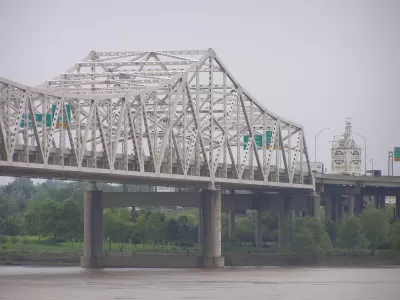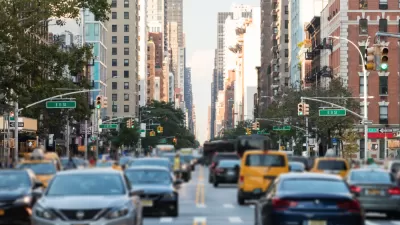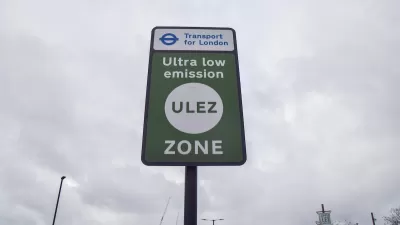Traffic on a Louisville freeway fell by half after a toll was implemented. Could this be the best way to reduce traffic congestion?

Writing in City Observatory, Joe Cortright suggests that congestion pricing is one of the most effective ways to reduce traffic. He points to an example from Louisville, where traffic on Interstate 65 fell by half after Indiana and Ohio instituted a $1 to $2 toll on a bridge across the Ohio River.
The two states spent a billion dollars doubling the size of I-65, only to have half as many people use the bridge. That money was wasted. Nothing more clearly illustrates the utter folly of highway expansions. As we’ve pointed out, highway engineers size roadways based on the assumption that the users will pay nothing for each trip. … But ask people to pay, and you’ll get fewer takers.
According to Cortright, this suggests that most drivers don't want to pay to use roads, and will avoid toll roads by taking alternate routes or alternate modes of transport, or not making some trips at all. Even a small toll, such as Louisville's $1 to $2 fee, can have a noticeable impact on congestion and road usage. Meanwhile, highway expansion has been repeatedly shown to induce demand and encourage more driving. While state DOTs have been slow to implement congestion pricing programs, road pricing, Cortright argues, is a "surefire fix for traffic congestion."
FULL STORY: How to solve traffic congestion: A miracle in Louisville?

Planetizen Federal Action Tracker
A weekly monitor of how Trump’s orders and actions are impacting planners and planning in America.

Congressman Proposes Bill to Rename DC Metro “Trump Train”
The Make Autorail Great Again Act would withhold federal funding to the system until the Washington Metropolitan Area Transit Authority (WMATA), rebrands as the Washington Metropolitan Authority for Greater Access (WMAGA).

DARTSpace Platform Streamlines Dallas TOD Application Process
The Dallas transit agency hopes a shorter permitting timeline will boost transit-oriented development around rail stations.

Supreme Court Ruling in Pipeline Case Guts Federal Environmental Law
The decision limits the scope of a federal law that mandates extensive environmental impact reviews of energy, infrastructure, and transportation projects.

Texas State Bills to Defund Dallas Transit Die
DART would have seen a 30% service cut, $230M annual losses had the bills survived.

Bikeshare for the Win: Team Pedals to London Cricket Match, Beats Rivals Stuck in Traffic
While their opponents sat in gridlock, England's national cricket team hopped Lime bikes, riding to a 3-0 victory.
Urban Design for Planners 1: Software Tools
This six-course series explores essential urban design concepts using open source software and equips planners with the tools they need to participate fully in the urban design process.
Planning for Universal Design
Learn the tools for implementing Universal Design in planning regulations.
Roanoke Valley-Alleghany Regional Commission
City of Mt Shasta
City of Camden Redevelopment Agency
City of Astoria
Transportation Research & Education Center (TREC) at Portland State University
US High Speed Rail Association
City of Camden Redevelopment Agency
Municipality of Princeton (NJ)





























